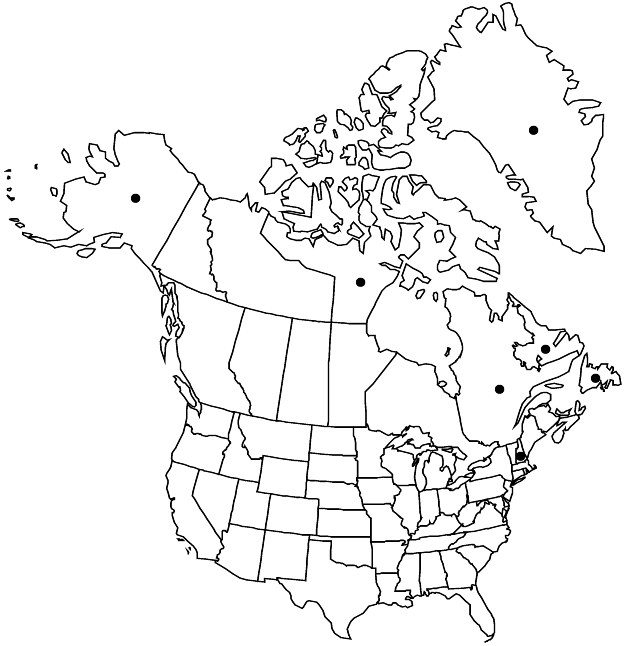Saxifraga rivularis
Sp. Pl. 1: 404. 1753,.
Plants (delicate), loosely tufted or matted, (green to purple), stoloniferous, weakly rhizomatous, (with bulbils in axils of basal leaves). Leaves basal and cauline; petiole ± flattened, 2–30(–50) mm; blade reniform, 3–5(–7)-lobed (lobes rounded, sometimes ± obtuse, distalmost unlobed), (2.6–)3.7–5.2(–7.4) mm, slightly fleshy, margins entire, eciliate or sparsely glandular-ciliate, without lime-secreting hydathodes (with nonsecreting hydathodes at lobe apices), apex acute, surfaces glabrous. Inflorescences 2–3(–5)-flowered cymes, sometimes solitary flowers, (flowers pedicellate), 1.7–7 cm, glabrous or sparsely to ± densely tangled, pink-tipped stipitate-glandular; bracts (2–3), petiolate, (unlobed or 1–3-lobed, reduced). Flowers (hypanthium U-shaped in longisection); sepals erect, (sometimes rusty brown), elliptic to ovate, margins eciliate or sparsely glandular-ciliate, glabrous or sparsely to densely stipitate-glandular; petals white, sometimes pink tinged, not spotted, oblong to elliptic, 2–6 mm, to 2–3 times length of sepals; ovary 1/2 inferior.
Distribution

Nunavut, Que., Alaska, N.H., n Eurasia.
Discussion
Subspecies 2 (2 in the flora).
Some reports of Saxifraga sibirica Linnaeus from Canada are misidentifications of this species.
Selected References
None.
Key
| 1 | Plants wholly green or purple only in inflorescences; hair crosswalls usually without color, rarely pale purple; inflorescences 2.7-7 cm, glabrous or sparsely stipitate-glandular; hypanthia sparsely short stipitate-glandular, hairs 0.1-0.3(-0.4) mm. | Saxifraga rivularis subsp. rivularis |
| 1 | Plants mostly purple (at least inflorescences); hair crosswalls purple; inflorescences 1.7-3 cm, sparsely to densely stipitate-glandular; hypanthia sparsely to densely long stipitate-glandular, hairs (0.2-)0.3-0.6(-1.1) mm. | Saxifraga rivularis subsp. arctolitoralis |